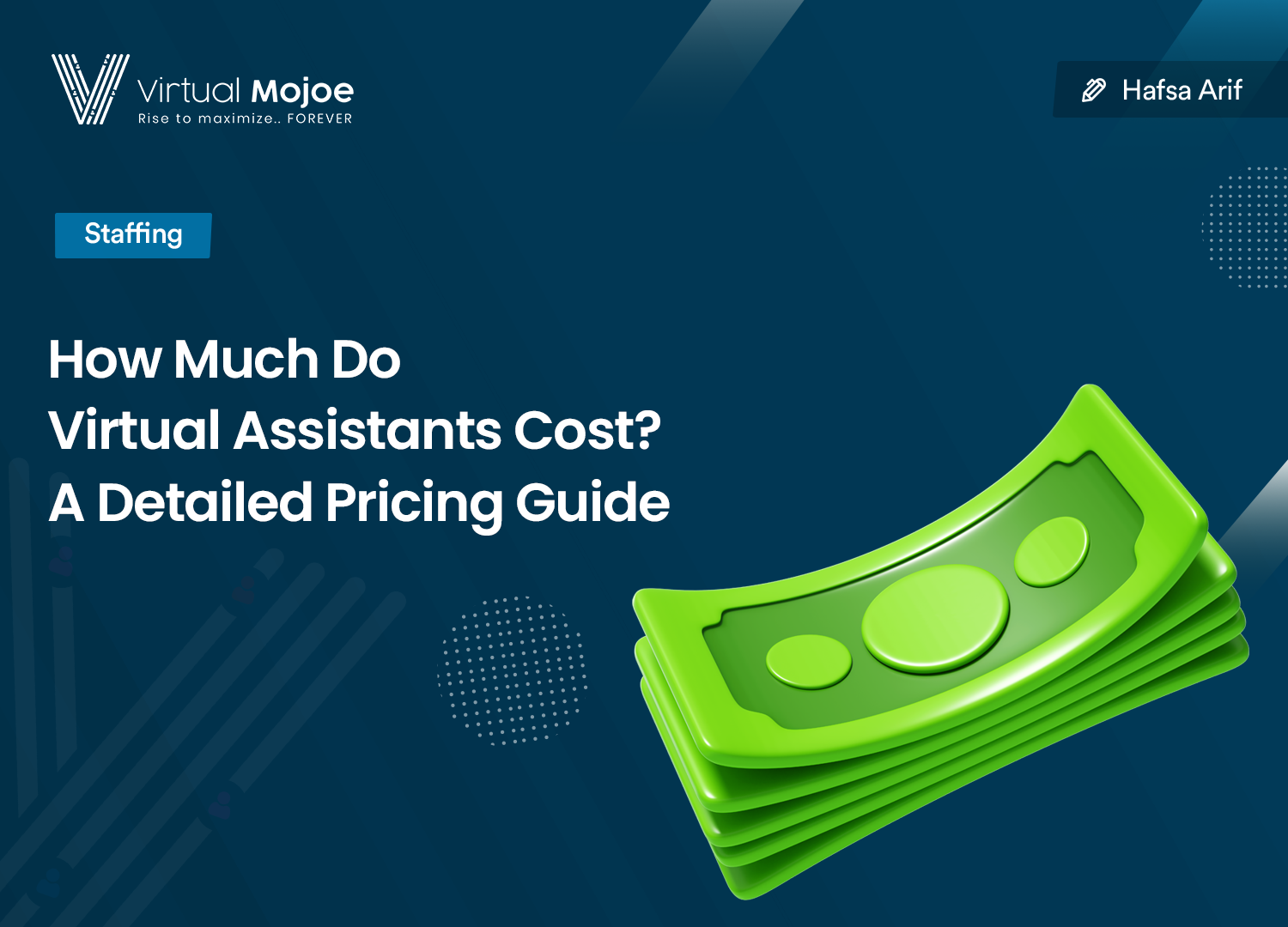Hiring a virtual assistant can be a game-changer for your business—but how much does a virtual assistant cost, really? With so many pricing models, regions, and skill levels, it can be difficult to know what’s reasonable or how to budget effectively.
Understanding how virtual assistant pricing works is essential before making a hiring decision. Costs vary depending on the assistant’s experience, location, the type of work they do, and how you choose to structure the contract. In this guide, we’ll break down all the factors that affect pricing, explore different payment models, and help you decide what makes sense for your business needs.
Why Hire a Virtual Assistant?
Virtual assistants help businesses delegate time-consuming tasks so owners and teams can focus on what matters most. Whether it’s inbox management, bookkeeping, customer service, or marketing support, VAs can take over responsibilities that eat up your time.
Compared to in-house employees, hiring a virtual assistant is more affordable because you’re not paying for office space, equipment, benefits, or downtime. You only pay for actual productive work, often at a fraction of the cost of hiring a full-time team member.
VAs are also flexible. You can hire them part-time, full-time, or project-based depending on your current workload. This makes it easier to scale support without long-term commitments or overhead.
How is Virtual Assistant Cost Calculated?
The cost of a virtual assistant varies based on several key factors that shape the scope, quality, and speed of the work they deliver. There’s no one-size-fits-all answer when evaluating rates.
Scope of Work
The complexity of the tasks you assign is one of the biggest pricing variables. Basic administrative work like data entry or scheduling typically falls on the lower end of the rate spectrum. Tasks that require more specialized skills—such as email marketing, bookkeeping, or customer support—will cost more. Highly technical roles like SEO, paid ads management, or graphic design often demand even higher rates due to the depth of knowledge and experience required.
Experience and Expertise
Not all virtual assistants have the same level of experience. Entry-level VAs, often ideal for repetitive tasks, generally charge lower rates. Mid-level assistants, with proven work history and polished communication skills, may cost more but often bring more value. Expert-level VAs or those with certifications in specific industries or tools—like Salesforce, QuickBooks, or HubSpot—charge premium rates due to their ability to operate independently and deliver higher-level output.
Urgency of Task
If you need something done urgently or outside of normal hours, expect to pay more. Time-sensitive assignments typically come with rush fees or higher hourly rates. For example, asking a VA to deliver a 24-hour turnaround for a campaign might double the cost compared to a standard deadline.
Geographic Location
Where your VA is located also influences pricing. Virtual assistants based in the U.S., Canada, or Western Europe generally charge more than their counterparts in regions like Southeast Asia or Latin America. That said, many VAs in lower-cost regions offer high-quality work at competitive prices—especially in countries like the Philippines and India, where English proficiency and remote work culture are strong.
Here’s a general comparison of average hourly rates by region:
| Region | Average Hourly Range |
| U.S. / Canada | $25 – $60+ |
| Western Europe | $20 – $50 |
| Eastern Europe | $10 – $25 |
| Philippines | $5 – $15 |
| Latin America | $8 – $20 |
| India / South Asia | $5 – $15 |
Full-Time vs. Part-Time vs. Freelance
Your pricing also depends on how you engage the VA. Full-time VAs, especially those contracted for 30–40 hours per week, usually come at a discounted hourly rate. Part-time VAs are ideal for ongoing work that doesn’t require a full workweek. Freelancers or project-based VAs tend to charge more per hour, but the flexibility can be worth it if your needs are sporadic or temporary.
How to Pay a Virtual Assistant?
There are three common payment structures for VAs: hourly, retainer, and project-based. Each has its own advantages depending on how consistent your workflow is.
Hourly
Many businesses start with hourly payment for flexibility. You’re billed only for the hours worked, which is great when your workload varies from week to week. Hourly rates typically range from $5/hour on the low end to $60+/hour for highly specialized or U.S.-based VAs.
Best for
This model works well for short-term tasks, ad hoc assignments, or testing out a new VA before committing to a longer engagement.
Monthly Retainer
A retainer agreement means you pay a fixed monthly fee for a guaranteed number of hours. This setup offers stability and is ideal for businesses that need recurring support—like managing inboxes, handling customer inquiries, or processing invoices. Retainers also allow you to lock in availability and may come with a lower effective hourly rate.
Best for
This structure is best for ongoing administrative support and long-term collaboration where consistency matters.
Project-Based
Project-based pricing is common for clearly defined deliverables. You agree on a fixed cost upfront, making budgeting straightforward. This is ideal for one-time needs like setting up a website, launching a marketing campaign, or completing a research project.
Best for
Project-based pricing gives both parties clarity and is a great fit when you can clearly outline scope, timeline, and expected results.
Tips for Budgeting When Hiring a Virtual Assistant
Budgeting smartly for a VA means starting small and scaling up as you gain clarity on the value they provide. One smart move is to begin with a trial period—10 to 20 hours over a couple of weeks is often enough to evaluate performance and fit. This helps you avoid long-term commitments before you’re sure of the match.
It’s also important to define tasks clearly. Vague assignments lead to miscommunication, wasted time, and higher bills. Outline responsibilities, expected outcomes, and deadlines from the start.
Finally, use project management and time-tracking tools. Tools like Trello, Asana, ClickUp, and Time Doctor not only improve workflow and visibility but also help you manage hours and stay within your budget.
Where to Find a Virtual Assistant?
There are two main ways to hire a virtual assistant: through freelance platforms or VA staffing agencies.
Freelance marketplaces like Upwork, Fiverr, and Freelancer offer access to a broad talent pool with varying rates and skills. These platforms are great if you want flexibility and have time to screen candidates yourself.
On the other hand, virtual assistant agencies like Virtual Mojoe and Prialto manage everything for you—from sourcing and vetting to onboarding and quality assurance. This option is best if you want a reliable, hands-off process and long-term support.
Choosing between a platform and an agency depends on your budget, workload, and how much time you want to invest in managing the hiring process.
How to Get the Best Out of Your VA
Get the most out of your virtual assistant by setting expectations early, establishing tools, clear communication with regular check-ins to align on progress. A short onboarding document, even just a list of recurring tasks and login details, can make a big difference in getting things off the ground.
Investing a bit of time in training and feedback early on will pay off in the form of faster turnaround, fewer mistakes, and better alignment with your goals. The more your VA understands your business, the more value they’ll deliver over time.
Conclusion
Understanding the cost of a virtual assistant helps you make smarter, more confident hiring decisions. While rates vary depending on location, expertise, task type, and contract model, the flexibility and value VAs provide often outweigh the cost—especially compared to in-house staffing.
By choosing the right pricing model and defining your needs clearly, you can find a VA that fits your workflow, budget, and long-term business goals.
FAQs
What is the average cost of a virtual assistant?
The average cost of a virtual assistant ranges from $5 to $60+ per hour depending on skill level and location. U.S.-based VAs tend to cost more, while VAs from Southeast Asia and Latin America are usually more affordable.
Is it legal to hire a virtual assistant?
Yes, hiring a virtual assistant is completely legal. To protect your business, make sure to use contracts, define scope of work clearly, and sign NDAs if sensitive data is involved.
How many hours do virtual assistants work?
VAs can work as little as a few hours per week or be contracted full-time. The working hours are usually defined by your agreement and can vary based on whether the VA is freelance, part-time, or full-time.
How much per hour for a virtual assistant?
Hourly rates range widely—entry-level VAs often charge $5–$15/hour, mid-level VAs charge $15–$30/hour, and expert VAs can range from $30 to $60/hour or more.





